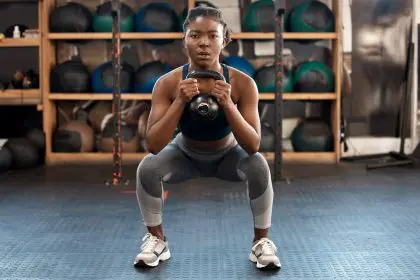A growing body of research confirms what many fitness experts have long known: the warm-up phase is not just a formality but a crucial step in maximizing workout performance and preventing injuries. Modern fitness routines have increasingly embraced this essential phase of exercise, placing renewed emphasis on its role in achieving peak performance.
The warm-up is not merely a time for stretching or light exercise. It is a carefully orchestrated process that prepares the body for the physical demands ahead. As the body transitions from a state of rest to one of activity, numerous physiological systems are activated, ensuring the muscles, joints, and cardiovascular system are ready for the intensity of exercise. A proper warm-up routine enhances athletic outcomes at all levels, from casual gym-goers to elite athletes, providing a strong foundation for both safety and success.
Understanding metabolic activation
The transition from rest to exercise is more than just a change in pace. It is a sophisticated, multi-step process that activates metabolic pathways and prepares the body for physical exertion. Blood flow to working muscles increases significantly, allowing them to receive the oxygen and nutrients needed to perform at their best. Core body temperature also rises, which increases muscle elasticity and flexibility, making them less prone to strain or injury.
Alongside these physiological changes, the brain also undergoes a process of neural activation. Neural pathways become primed for action, which improves coordination and reaction times. This preparatory phase essentially sets the stage for better performance and reduces the risk of injury, ensuring that the body is ready to handle higher levels of intensity. Research has shown that the right warm-up sequence not only prevents injuries but can also increase the efficiency and effectiveness of the exercise itself.
Movement preparation strategies
Dynamic warm-up routines are widely recognized as the gold standard in modern exercise preparation. Unlike static stretching, which involves holding a stretch for extended periods, dynamic warm-ups use controlled, deliberate movements to prepare the body for more intense activity. These movements target the joints and muscles in ways that mimic the actions performed during the workout.
Dynamic exercises such as controlled articular rotations, leg swings, and arm circles progressively increase mobility and flexibility, enabling the body to move more freely. They also help activate the neuromuscular system, improving coordination and muscle engagement. Incorporating movement pattern rehearsals further primes the body for the specific demands of the workout. For instance, performing light squats or lunges before engaging in weight training can enhance the activation of the right muscle groups, ensuring they are engaged throughout the workout.
Flexibility fundamentals
While static stretching has long been a staple in warm-up routines, contemporary research suggests that flexibility should be approached with more nuance. A combination of dynamic and static stretching, performed at the right times, can lead to better performance outcomes and improved muscle function.
Dynamic stretching is most beneficial during the warm-up phase, as it helps increase the range of motion and enhances muscle activation. Static stretching, on the other hand, is better suited for post-workout, when muscles are already warm and more pliable. Used strategically, static stretching can improve flexibility without compromising strength or power.
The key takeaway is that flexibility work, when integrated into a warm-up routine, helps maintain joint integrity and prepares muscles for the load they will carry during exercise. This balanced approach ensures that flexibility supports, rather than hinders, performance.
Cardiovascular considerations
One of the most essential elements of any warm-up routine is the gradual elevation of heart rate and core temperature. Progressive cardiovascular activity ensures that the body’s cardiovascular system is adequately prepared for exercise, reducing the risk of sudden exertion injuries. Activities such as light jogging, brisk walking, or cycling on a stationary bike can elevate heart rate steadily, preparing the cardiovascular system to handle the demands of more intense exercise.
An effective warm-up includes both general cardiovascular activity and movements that activate the muscles specific to the workout. For example, a light jog followed by dynamic stretches or joint rotations will warm up both the cardiovascular and musculoskeletal systems, ensuring a full-body preparation for the workout ahead. This approach allows for a smoother transition from low-intensity to high-intensity exercise, improving endurance and performance.
Performance optimization
The culmination of a well-executed warm-up is improved workout performance and reduced risk of injury. This investment in preparation pays significant dividends, not only in immediate performance but also in long-term training outcomes. A proper warm-up ensures that the body is primed for the demands of exercise, enhancing strength, flexibility, and endurance. By reducing injury risk, it enables athletes to train harder, longer, and more consistently, accelerating progress over time.
Moreover, regular incorporation of warm-up routines into training programs can lead to lasting physical adaptations. Athletes who consistently warm up before their workouts are more likely to experience improved mobility, reduced muscle soreness, and a lower incidence of overuse injuries. Over time, this contributes to better overall fitness, faster recovery, and a higher level of athletic performance.
As more research emerges about the profound impact of warm-up routines, it becomes increasingly clear that this crucial phase deserves more attention in fitness regimens. By adopting scientifically-backed warm-up strategies, individuals can unlock their full workout potential and protect themselves from unnecessary injuries.














